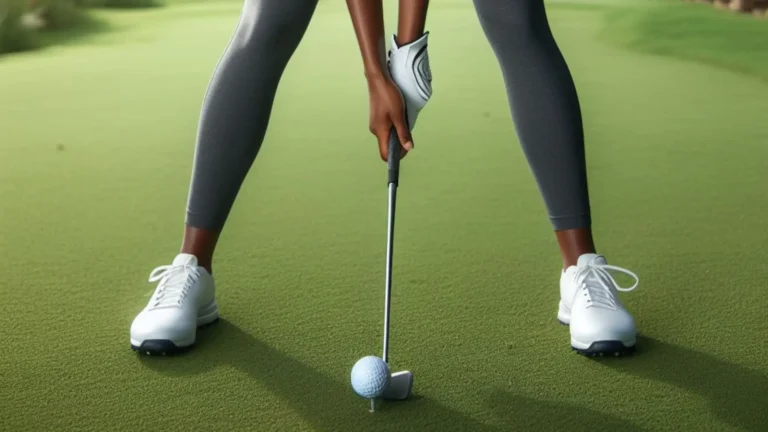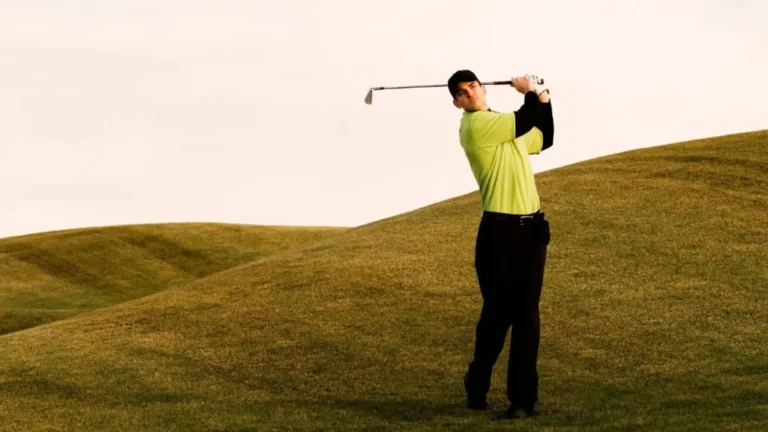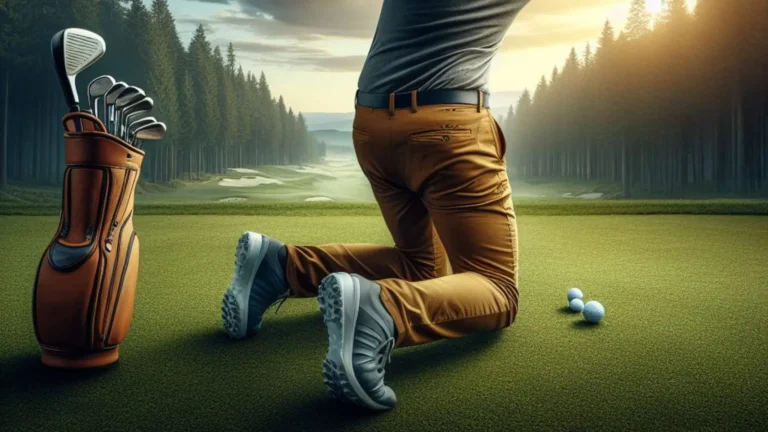Chip V Pitch – Understanding the Differences in Golf Shots
In golf, a variety of different shots are used to advance the ball towards the hole or get it out of tricky spots around the course. Two common shot types that often get confused are the chip shot and the pitch shot. While they share some similarities and overlap, there are distinct differences between chipping and pitching in golf. This article will examine the definitions, techniques, purposes, and situational uses of these iconic golf shots.
Both chipping and pitching refer to short game shots that are played around the green. They require accuracy, touch, and finesse more so than power. The main difference lies in the distance covered and the loft used on the club. Chips shots travel a shorter distance with more rolling, while pitch shots fly higher and further before hitting the green.
Chipping Basics and Mechanics
A chip shot in golf is a low running shot typically played from just off the green. The ball stays low to the ground before landing softly on the putting surface and rolling out towards the hole.
Distance and Trajectory
Chip shots usually only carry 10-30 yards through the air. The ball flight trajectory is very low. Experienced golfers use this to their advantage to keep the ball beneath tree limbs and avoid hazards and contours around the greens.
Club and Grip
Clubs with high loft angles like sand wedges, lob wedges, and gap wedges in the 54-64 degree range are most suitable for chipping. A wide stance with weight on the front leg is used. Gripping down the club and using a putting-style stroke facilitates rolling contact for smoothness.
Technique
The chipping motion is abbreviated compared to a full swing. Wrists are locked as the shoulders make a restricted back and forward pivot over a stationary lower body. Ball position starts close to the front foot to create a descending blow with maximum turf interaction. This opens the clubface automatically. Accelerating through impact imparts overspin for quick braking on the green.
Purpose and Use
Chip shots excel getting the ball onto the putting surface from tight lies in the rough or tricky stances close to obstacles. The running nature helps access pin positions protected by bunkers or water hazards. Chipping requires very precise distance judgment as the margin for error is small.
Pitching Approach and Mechanics
In comparison to chipping, pitch shots generate much higher ball flight due to differences in technique and club selection. The golf ball will carry in the air over a longer distance before hitting the green and releasing.
Distance and Trajectory
Pitches allow golfers to carry obstacles and land the ball softly from up to 50-75 yards out. The ball launches at a steep angle before arching towards the target and vertical descent.
Club and Grip
As pitch shots cover more distance, clubs with less loft are needed. Fairway woods, hybrids, 5-9 irons are commonly used. Players often grip down an inch or more on the handle to enhance feel and swing control. Weight favors the rear foot initially.
Technique
Pitching uses a fuller shoulder turn, wrist hinge and accelerate through impact for added power. Strike the ball first with a slight downward angle of attack. This compresses the ball against the turf to achieve great height from the lofted clubface.
Purpose and Use
Pitching shots provide critical aerial access to back hole locations on raised greens or across hazards. The ability to shape height, curve and stop the ball expands strategic options. Pitching combines attributes of full shots and short wedges. This versatility makes the technique an extremely useful one to manage based on current course layouts.
Chipping V Pitching – Key Differences and Deciding Factors
While chipping and pitching fill complementary roles from off the green, knowing when to apply each technique depends on several determining factors related to distance, precision, and obstacles.
Distance Gaps
Chipping is best for covering 10-30 yards max with plenty of rolling from turf interaction. Pitching can fly the ball up to 75 yards to attack back pins or distant targets. So distance needs dictate club selection and shot choice.
Obstacles and Hazards
For low height barriers like tree branches, utilize chip shots to minimize airspace. When facing tall obstructions, bunkers and water hazards, opt instead for lofted pitch shots the carry the ball high enough then land softly.
Lie and Stance
Chipping works great from tight lies in thick grass or near curbs where keeping the ball low is wise. For awkward stances with poor footing that restrict balance, strong pitch shots can power through.
Precision and Positioning
Pinpoint precision is easier on low chip shots than steep high pitches. So when aiming at tucked hole locations protected closely by hazards, utilize the former. But to access back plateau greens safely, allow margin for error by pitching instead.
Power and Carry
When needing to carry 50+ yards over hazards or mounds, only pitching technique can provide enough arc and launch. From closer range under 30 yards, low chip shots roll true without risk of overshooting.
FAQs
What is the main difference between a chip shot and a pitch shot?
The main difference is that a chip shot typically carries only 10-30 yards through the air with a very low trajectory, while a pitch shot flies higher and carries up to 50-75 yards. Chipping relies more on ground roll, pitching relies more on air carry.
When would you use a chip shot over a pitch shot around the green?
You would opt for a chip shot when you have to keep the ball under tree branches, when trying to access a hole location protected closely behind a hazard, or when you have little green to work with and need precision.
What clubs are best suited for chipping vs pitching?
Chipping calls for higher lofted wedges like sand, lob and gap wedges in the 54-64 degree range. Pitching utilizes irons and woods in the 5-9 iron range, as well as fairway woods and hybrids for maximum distance.
Does setup and grip differ between chip shots and pitch shots?
Yes, chipping uses a narrow stance with weight on the lead foot and the ball played off the front foot. Pitching starts with weight back and allows for a fuller shoulder turn. It’s also common to grip down several inches for added pitch shot control.
When would you use a pitch shot instead of a full swing with a shorter club?
Pitch shots are best when you need to carry a hazard, hold a green from a longer distance, or handle an awkward lie. Pitching combines attributes of both short game finesse and full swing power for specialty shots into greens.
Conclusion
Mastering both chip shots and pitch shots delivers tremendous scoring advantages from around the greens. While chipping and pitching share similarities in being played from off the putting surface with lofted clubs, critical differences in technique and use case exist. Now that you understand those key distinctions, you can develop proficiency and confidence in both critical short game weapons. Analyze distance, lie, precision needs and other factors before deciding when to chip vs pitch. Sharpen these skills, and you will save countless strokes on the golf course.







